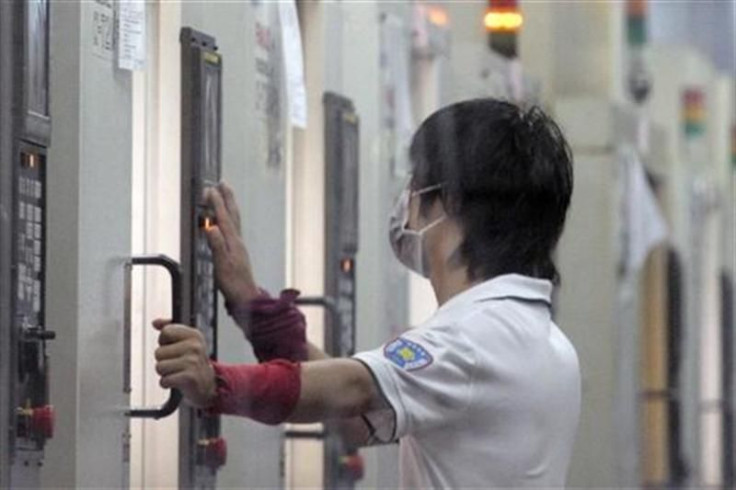Chinese Manufacturing Weaker in April: Markit PMI Report

The Chinese manufacturing sector continued to weaken in April, although its rate of deterioration slowed from March, as demand remained low and new business declined, according to a purchasing managers index by HSBC and Martkit that was released Wednesday.
The Purchasing Managers Index (PMI), which provides a snapshot of the manufacturing sector, rose to 49.3 in April, up from March's reading of 48.3. A PMI below 50 represents contraction. The one-point gain in April indicates that while the Chinese manufacturing sector continued to suffer, the rate of decline slowed from the previous month.
The upward revision to April's final PMI reading ... confirms that the pace of China's slowdown is stabilized. The 8.1 percent year-over-year GDP growth is likely to be the cyclical trough, Hongbin Qu, Chief Economist, China and co-head of Asian economic research at HSBC said.
Both manufacturing output and new orders fell, but at marginal rates, and input cost inflation was not exceptional, the report showed. However, employment fell at the fastest rate in three years.
Manufacturing output decreased for the second month in a row in April, albeit at a slower rate than in March. Firms reporting declines in factory output noted that there was less new business coming in, and goods producers reported weak underlying demand during April. However, the decline of new business orders was the slowest it's been for six months, and there was an uptick of new export orders.
Likewise, growth was reported for outstanding orders awaiting completion for the second month running in April, but the rate of backlog accumulation was negligible. Purchasing rose modestly in April as companies depleted stocks, but raw material demand remained depressed, and vendor performance deteriorated at the worst rate since October 2011.
There was modest inflation in April, driven mainly by higher fuel and material costs. Tariff rates stabilized after five months of steady reduction.
As easing measures are starting to work and additional easing measures are on the way in the light of accommodative inflation outlook in the coming months, we expect Chinese GDP growth to bottom out in the second quarter and recover modestly to over 8.5 percent in the second half, Qu said.
© Copyright IBTimes 2024. All rights reserved.











